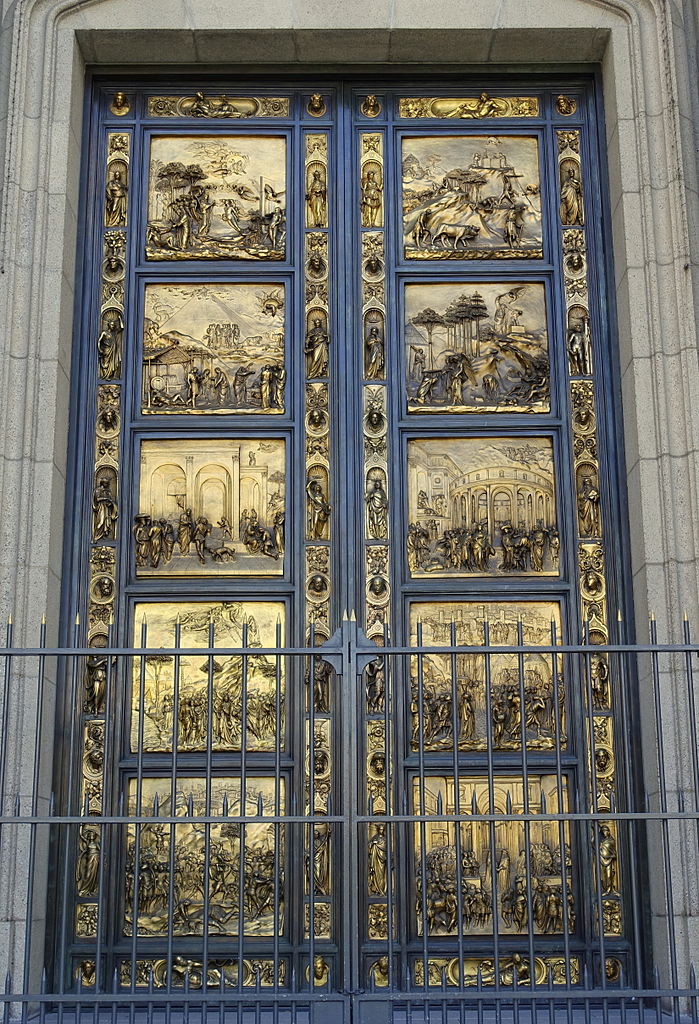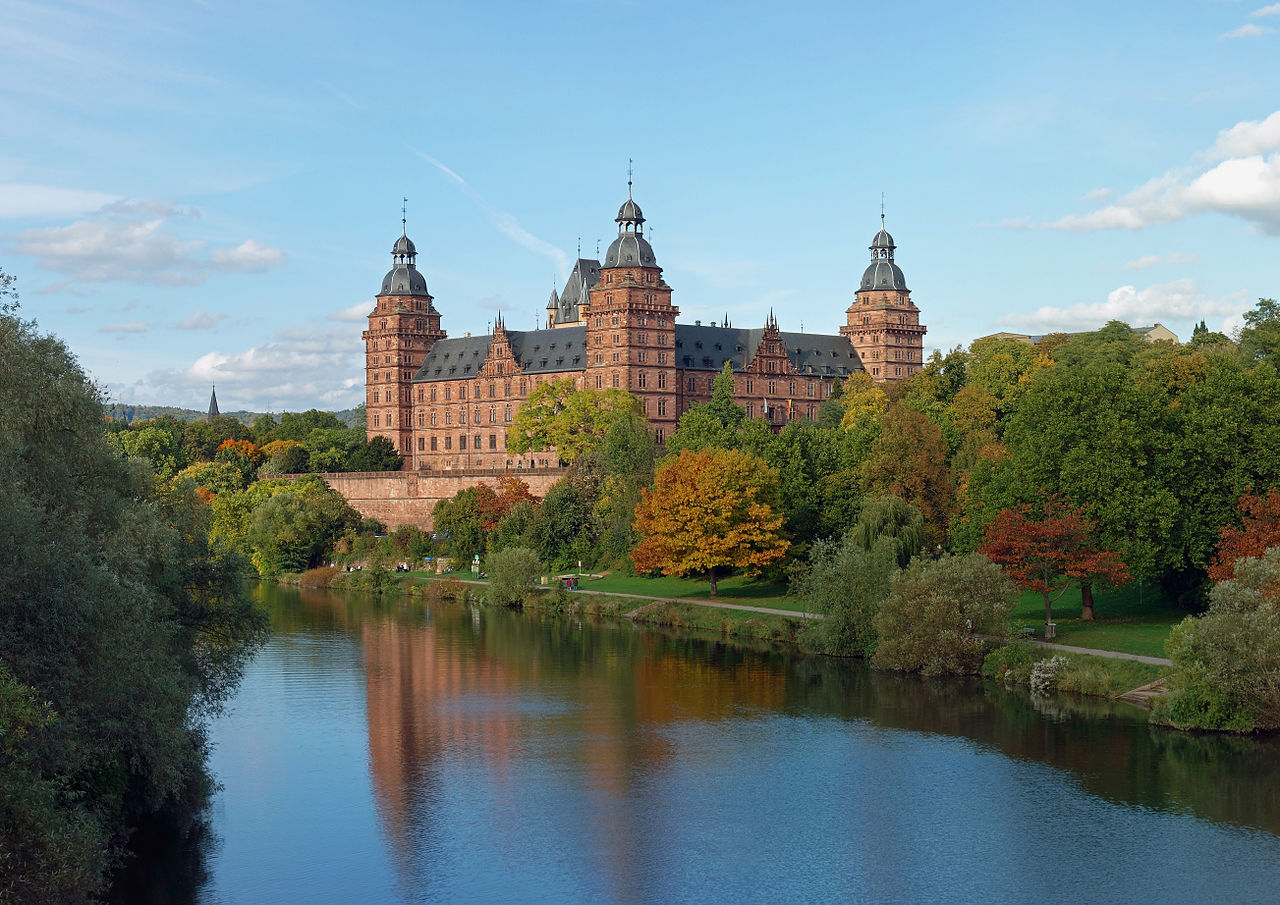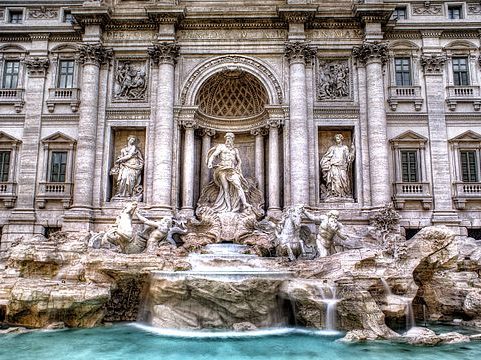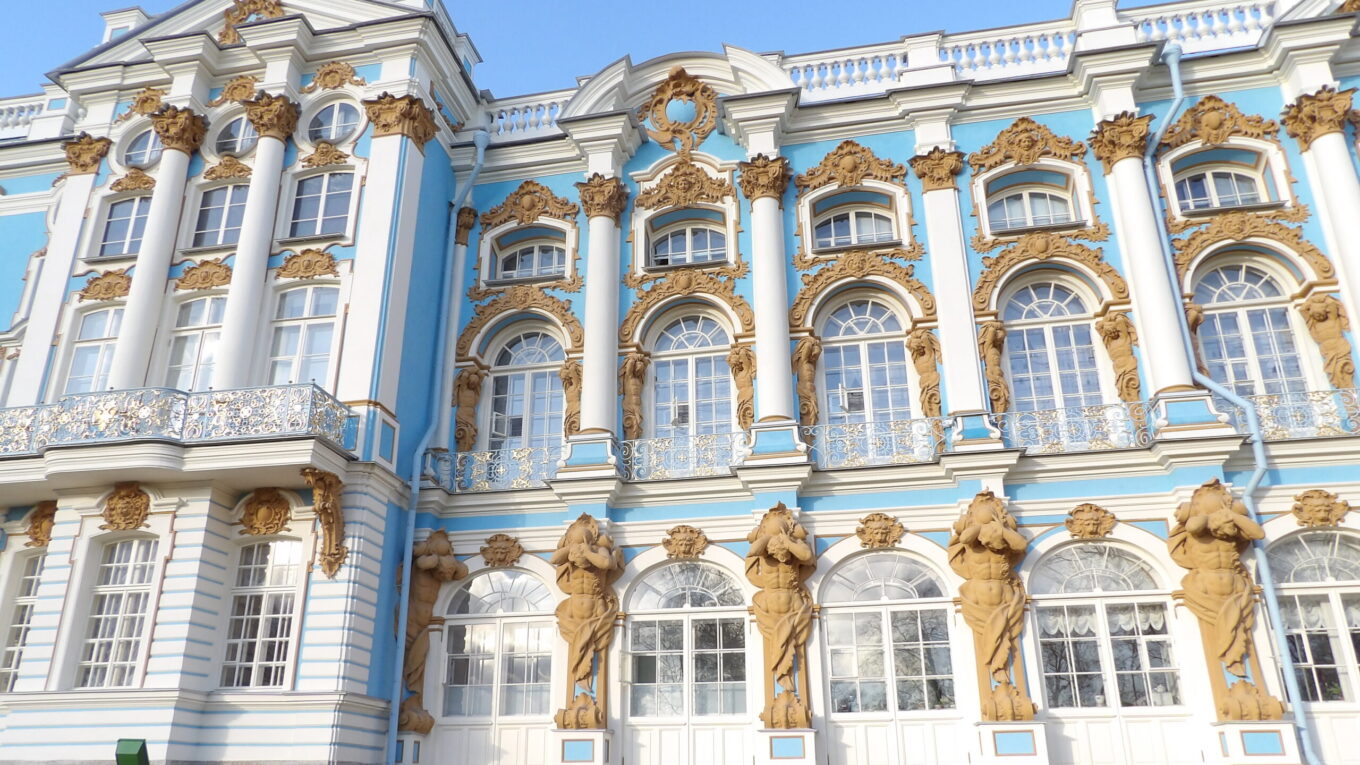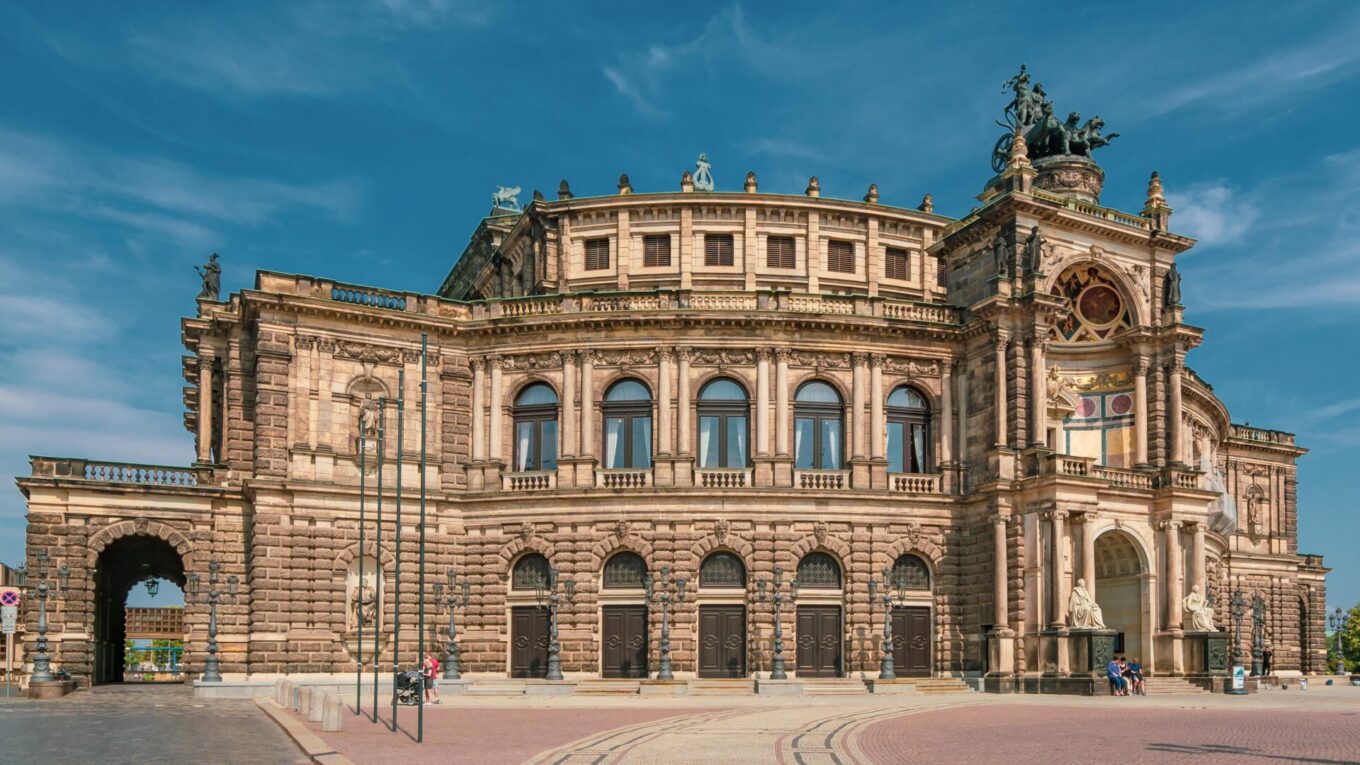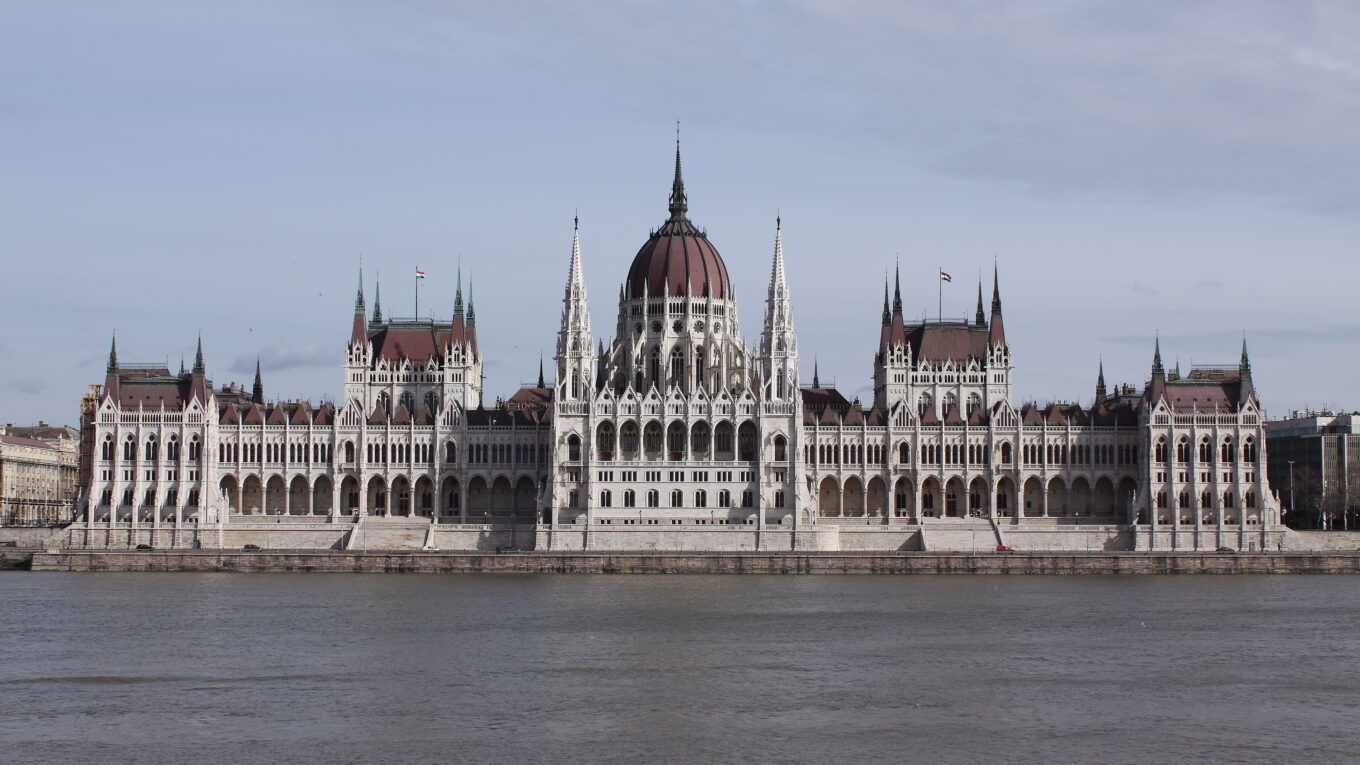Top 25 Examples of Renaissance Architecture
Renaissance Architecture emerged in the early 15th century, at a time when Europe was going through some major changes. The Renaissance movement began in the heart of Italy in cities like Florence, Rome, and Venice, and eventually spread outward to the rest of the continent. The Renaissance embodied a lot of the political and cultural shifts that were occurring in Europe at the time, particularly the humanism movement. Scholars and academics were breaking away from the Christian church, and they were relearning a lot of the important ideas from Classical Antiquity. Philosophy, science, mathematics, art, and architecture were all fields that saw great strides during this time. The lessons learned during the Renaissance would go on to greatly change the world today. This article will focus on the Architecture of the Renaissance, highlighting 25 of the greatest Renaissance Buildings and how they changed the landscape of Europe forever.
What is Renaissance Architecture?
Renaissance Architecture is a building style that was prevalent in Europe from the 15th to the 16th century. The Renaissance style was born in Florence, but it quickly spread to the rest of Italy and on to most of Europe. Renaissance Architecture exemplifies the overall Renaissance Movement, a rebirth of the knowledge of the Ancient Greeks and Romans which helped Europe transition from the Middle Ages to the Modern Era. Before the Renaissance, Europe was deep in the Age of Faith, when Gothic Architecture was the dominant style. But eventually, the Renaissance Movement and this rebirth of knowledge led to great social and political changes.

When was the Renaissance?
Renaissance Architecture Characteristics
Ancient Greek and Roman Elements

Renaissance Architecture borrowed many of its most distinctive elements from Classical Architecture. The buildings of the Ancient Greeks and Romans all utilized the same round arches, pediments, and columns. Column Capitals of the Classical orders, such as Doric, Ionic, and Corinthian, are prevalent in most Renaissance buildings. Here at St. Peter’s Basilica in Rome, you can see all of these various classical elements. The columns have Corinthian Capitals, there are pediments throughout the facade, and the roof balustrade is capped with marble statues, just like what was seen on some Roman and Greek Temples.
Symmetry
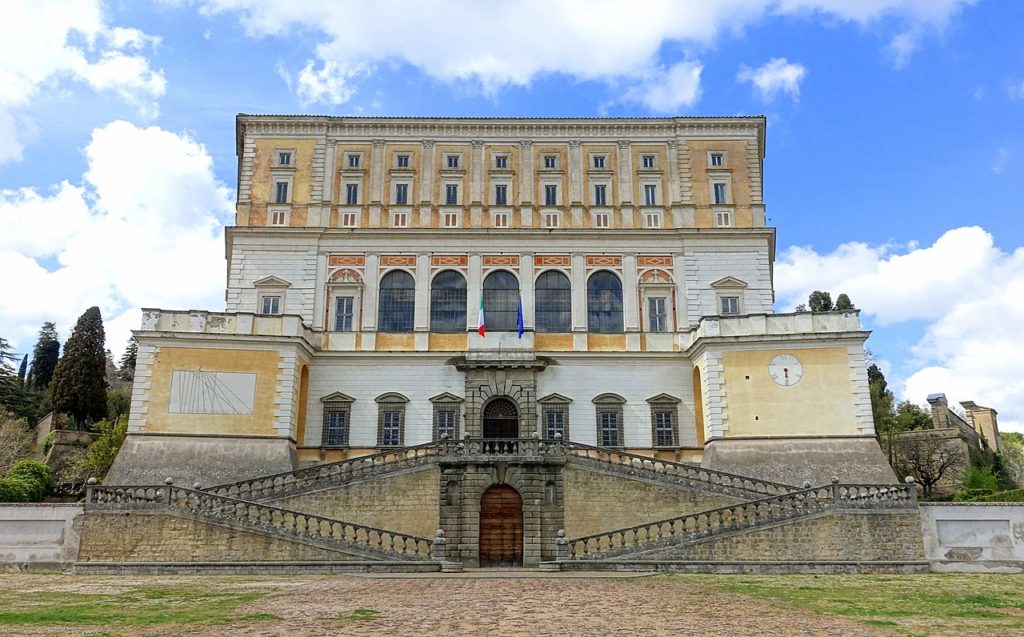
Symmetry is another key element in Renaissance Architecture. Virtually all Renaissance Buildings are symmetrical on multiple axes. The exterior elevations as well as the plans of many buildings from this era were designed to be symmetrical. You can clearly see these here in the Facade of Villa Farnese in Italy. The entire elevation is mirrored across the central axis that aligns with the main entrance. Villa Farnese was also built in a pentagonal plan, so it has five different facades, all of them using symmetry in various ways.
Proportion & the Golden Ratio
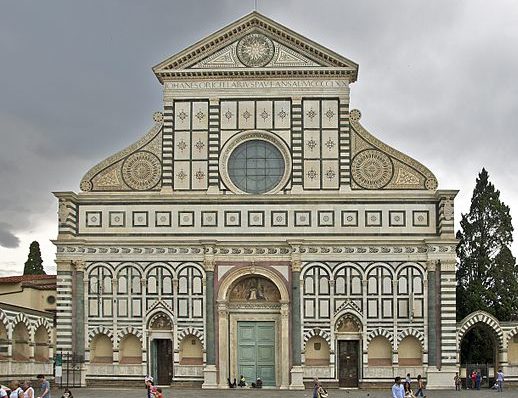
Proportions were also an integral part of Renaissance Architecture. Architects experimented with mathematical concepts such as the Golden Ratio to help them design buildings. Proportions were used on building elevations, and also in plan and section to develop the heights and widths of different spaces. Here at the Basilica of Santa Maria Novella in Florence, you can see the use of proportions within the design. Leon Battista Alberti used the Golden Ratio and combined several different geometries to create the facade.
Rhythm

Rhythmic Facades are another key element in Renaissance Architecture. Rhythm has been around since the birth of architecture itself. Renaissance Buildings took the concept of simple repetitive patterns and made it a key design feature. You can easily see this in virtually all of the buildings fronting the Piazzo San Marco in Venice. Here at the Biblioteca Marciana, the facade is simple and repetitive but also elegant and graceful.
Perspective Drawing in Renaissance Architecture
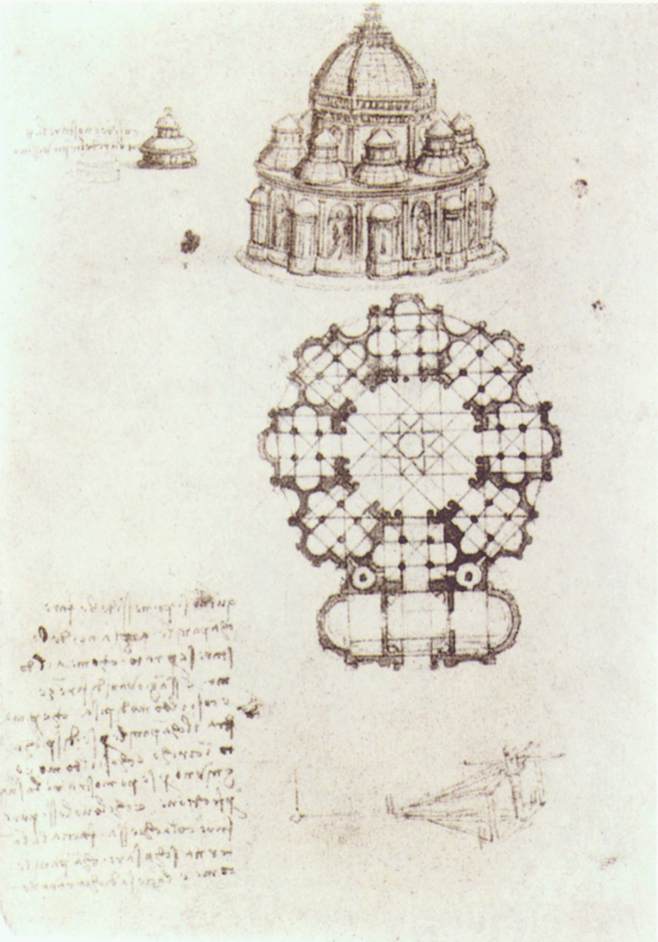
Starting with Giotto in the late 1200s, perspective became a key element in Renaissance Art. Giotto created several paintings that utilized perspective. Eventually, several great Renaissance Architects used perspective sketches and drawings to help them design.
Here, in a series of sketches by Michelangelo, you can see the plan and perspective of a church. Although these are just small-scale sketches, you can see the techniques behind perspective.
This new drawing style allowed architects like Michelangelo to show their Ideas in a much clearer way and helped them build grand and impressive structures.
Image from the Public Domain
What are the best examples of Renaissance Architecture?
The Renaissance was a rapidly evolving art movement that began in the late 13th century and lasted until the 17th century. Renaissance architects borrowed elements from much older works of Classical Architecture along with other traditional ideas such as symmetry and proportion. From Italy to Germany, Spain, and beyond, this list will attempt to showcase some of the finest, most innovative, and impressive examples of Renaissance Architecture; highlighting various buildings from the Renaissance Age.
1. St. Peter’s Basilica – Vatican City (Rome, Italy)

St. Peter’s Basilica in Vatican City is the world’s largest church and the principal church for all of Catholicism. A religious building has stood at this location since the time of the Roman Empire, when Emperor Constantine ordered the construction of a church in 318 CE. The current version of St. Peter’s Basilica replaced the Roman-era building, now known as “Old St. Peter’s Church” in the 16th Century. The older building had fallen into a state of disrepair, and the Popes wanted to create a larger and more impressive structure. Pope Julius II ordered the demolition of the old church, and work began on the current building. Over the next two centuries, various Popes and architects were all part of its construction. Some of the most important of these designers were Michelangelo, Bramante, and Gian Lorenzo Bernini.
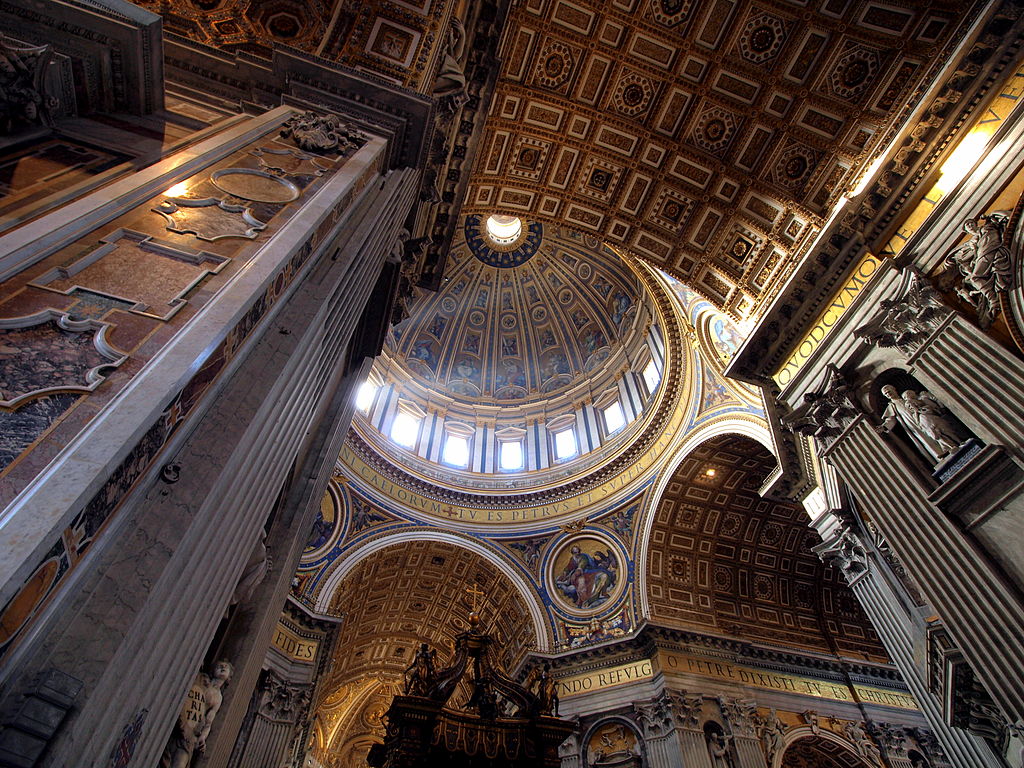
One of St. Peter’s most iconic elements is Michelangelo’s Dome. It held the title of the World’s Largest Dome from its completion in the 17th century until the modern age in the 1900s. Construction of the current version of St. Peter’s began in 1506 and lasted until 1626. Although the dome, the facade, and much of the interior date from the age of the Renaissance, St. Peter’s is also known as a great example of Baroque Architecture. St. Peter’s Square and the massive collonade outside the church were designed by Bernini in the 1600s. Today, St. Peter’s is one of the most visited sites in the entire world, and millions of people come to see the church, the square, and the adjacent Vatican Museums while in Rome.
2. Florence Cathedral – Florence, Tuscany, Italy

Florence Cathedral is also known as the Cathedral of Santa Maria del Fiore, or Duomo di Firenze. It is by far the most incredible building in all of Florence. The church originally dates from 1296 and many elements from Gothic Architecture can be found throughout the building. However, the interior of the church wasn’t enclosed until the 15th century when the infamous dome designed by Filippo Brunelleschi was completed. Even after that, the facade of the church wasn’t finished until 1887.

The dome of Florence Cathedral was an engineering marvel of the Renaissance. The original design of the church called for the construction of the World’s Largest Dome at that time, larger than that of the Pantheon in Rome. The only problem was – nobody knew how to build such a massive structure. The city held a design competition in 1418, which Filippo Brunelleschi won, thanks to his innovative dome-within-a-dome design. Florence Cathedral actually contains an outer dome, and a separate inner dome, each supporting the other to spread the load of the structure. The cathedral is so important and influential that it was one of the first buildings to be inscribed as a UNESCO World Heritage Site in 1982, along with the rest of the historic center of Florence.
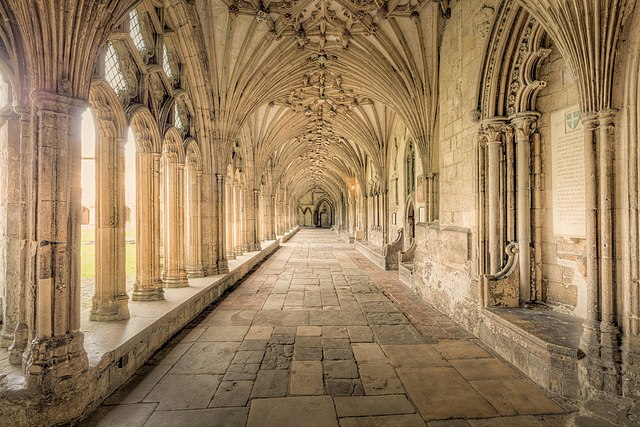
Gothic was the dominant architectural style in Europe during the early Middle Ages. Check out our article on the Top 25 Examples of Gothic Architecture to learn more!
3. Piazza San Marco – Venice, Veneto, Italy
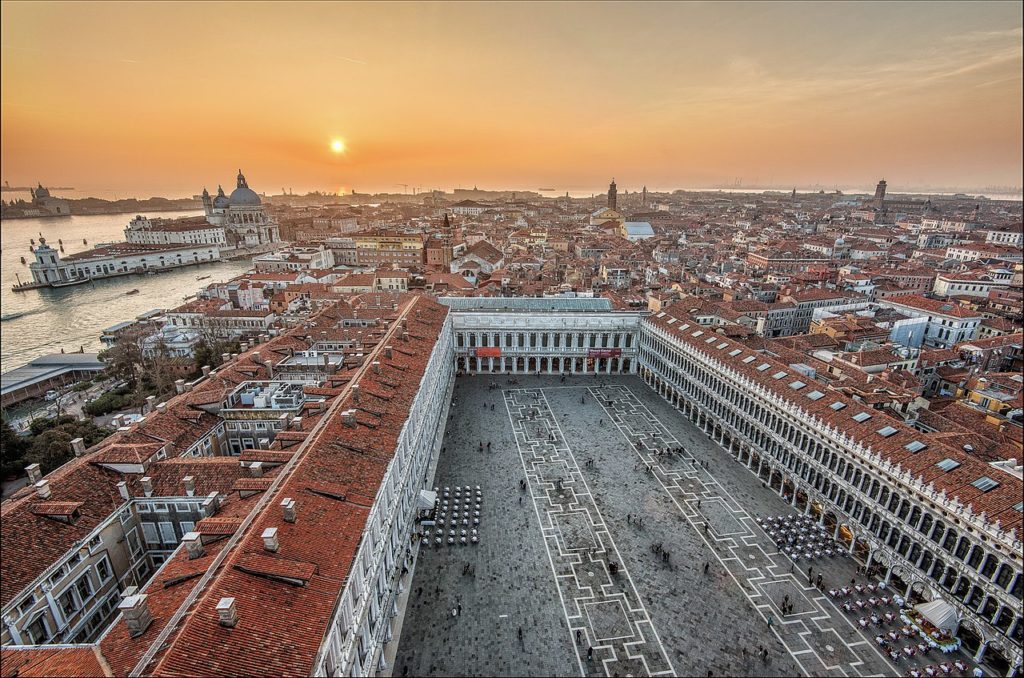
Venice, which was one of the original Italian Cities to adopt the style, is known for its many amazing Renaissance Buildings. Named for the patron saint of Venice, Piazza San Marco is the largest square within the city and it’s among the most famous Piazzas in all of Italy. The rhythmic facades that front the square each share the same heights and proportions. This gives the square a consistent appearance as if it was one unified building designed and built by one person at one point in time. This is in vast contrast to many other squares in Europe, where you see an amalgamation of medieval buildings of different shapes and sizes.
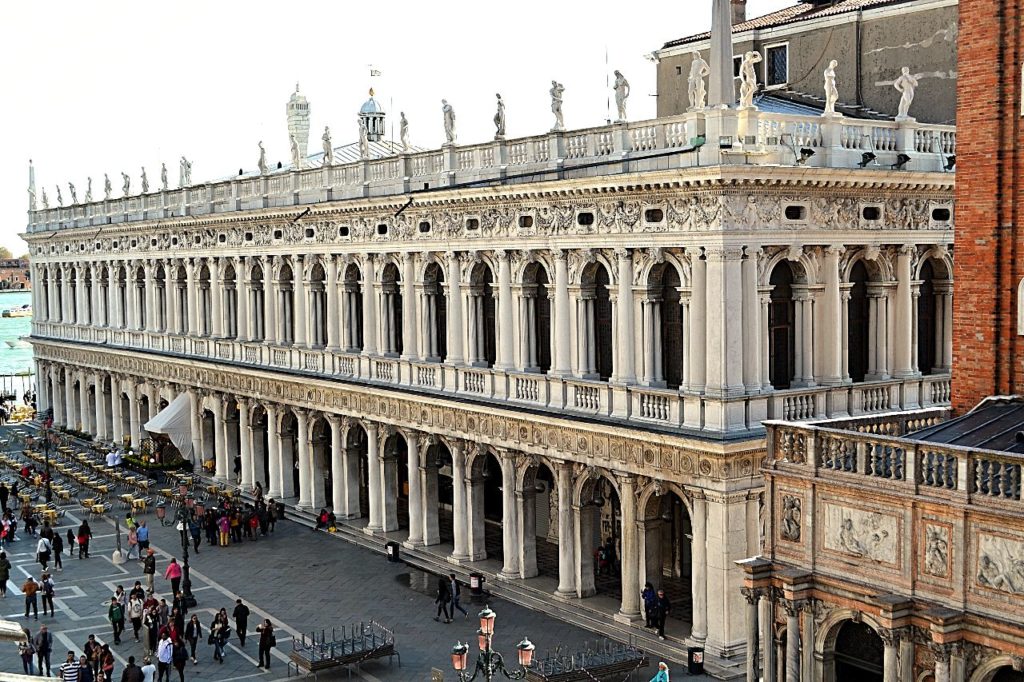
The Biblioteca Marciana, also known as the Library of St. Mark, is a Renaissance Building located directly across from the Doge’s Palace within Piazza San Marco. Construction began on the building in 1537, and the use of classical design elements can easily be seen throughout the exterior. There are white marble statues adorning the roof and there are Doric and Ionic columns, paired with round arches throughout the facade. The Biblioteca Marciana once contained a great collection of books, manuscripts, and historical documents. But most of these have since been moved to other locations and today the library mostly functions as a museum.
4. El Escorial – San Lorenzo de El Escorial, Madrid, Spain

After Renaissance Architecture spread out of Italy and on to the rest of Europe the Kings of Spain began to favor this new and modern style. El Escorial is one of Europe’s great Royal Palaces, rivaling others such as the Chateau de Versailles and Buckingham Palace. Construction began on El Escorial in the year 1563 and it lasted until 1584. The Basilica of San Lorenzo el Real is located within the center of the palace, and it takes up a large percentage of the overall footprint of the building. Although other Royal Residences throughout the continent contained religious spaces, El Escorial has one of the largest churches located within a European Palace.
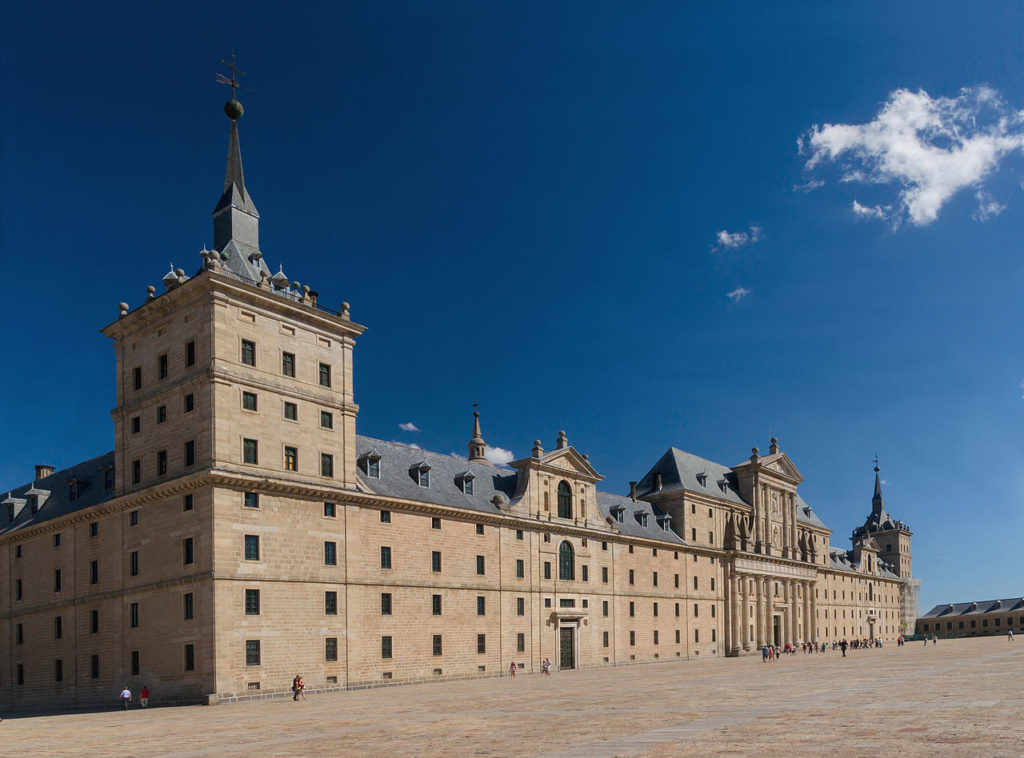
The building is truly massive, measuring over 650′ (198 m) along the front elevation, and over 525′ (160 m) along the side elevations. This incredible size has earned El Escorial the reputation of being the largest work of Renaissance Architecture ever constructed. The front facade features every major element in Renaissance Design, including symmetry, rhythm, and proportion. Today, El Escorial is listed as a UNESCO World Heritage Site, and it is visited by many as a short day trip from nearby Madrid.
5. The Sistine Chapel – Vatican City (Rome, Italy)


(left) Photo by Sailko from Wikimedia Commons
The Sistine Chapel is famous for the incredible paintings by Michelangelo on the church’s walls and ceilings. Michelangelo was selected by Pope Julius II to decorate the chapel’s interior, and he began the project in 1508. It took him 4 years of tireless work to complete the ceiling frescoes – and another 6 years to complete The Last Judgement, located on the east wall of the chapel. These are some of the most famous paintings in the history of art. Although from the exterior, the chapel looks more like a fortification than a church, the Renaissance Architecture used throughout the building pairs well with the art within.

In the ceiling of the chapel, you can see how Michelangelo used the building’s forms to orientate his paintings. There are arches and vaults throughout the ceiling which help spread the load of the roof. The paintings are all divided within the curves and angles of the ceiling, and this allowed Michelangelo to separate the scenes and tell dozens of different stories all at the same time. The Sistine Chapel is only accessible through the Vatican Museum, which is located in the heart of Rome right next to Saint Peter’s Basilica.
5. Piazza del Campidoglio – Rome, Lazio, Italy
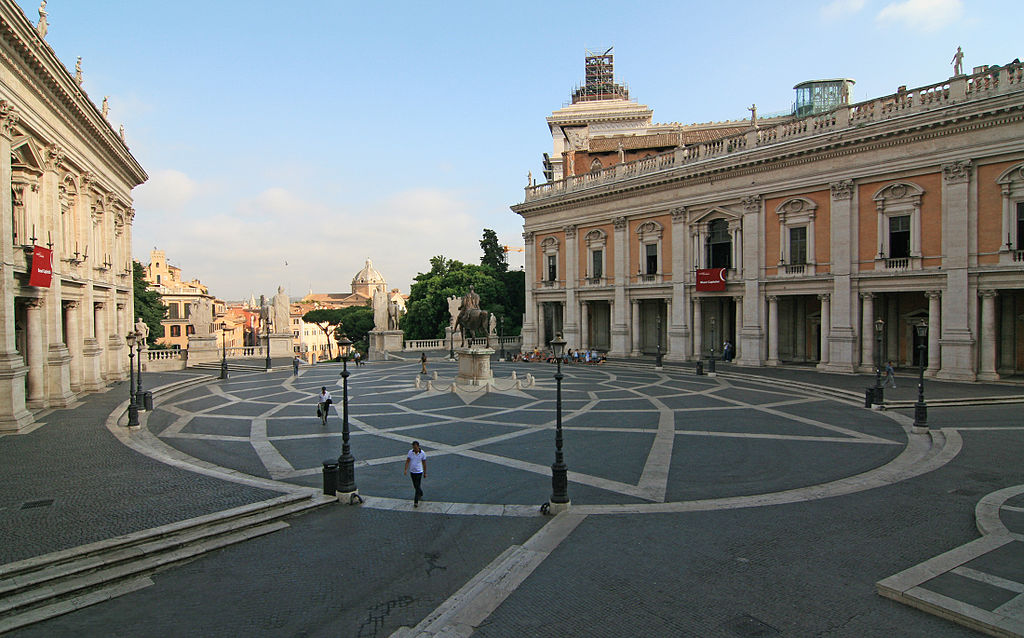
Another masterpiece designed by Michelangelo is the Piazza del Campidoglio. The piazza is located atop the Capitoline Hill in Rome. Construction took about 10 years and began in 1536, and it remains one of the most famous Piazzas in all of Italy. It’s known for its elliptical plan, and for the symmetrical layout of the buildings that create a forced perspective. At the center of the Piazza del Campidoglio is the famous equestrian statue of Marcus Aurelius. Many regard this sculpture as the greatest equestrian statue from antiquity. The real statue is kept out of the elements in an adjacent museum and a modern replica currently sits at the center of the piazza.
6. Basilica Palladiana – Vicenza, Veneto, Italy

Located in the heart of the main public square in Vicenza, the Basilica Palladiana is an incredible work of Renaissance Architecture designed by Andrea Palladio. The exterior facade is a great example of the rhythm and symmetry that is found throughout Renaissance Buildings, particularly ones designed by Palladio. The white marble, Ionic Columns, and rounded arches are also key elements of Classical Architecture that are common in Renaissance designs. The Basilica Palladiana was added to the UNESCO World Heritage List in 1994 along with several other monuments in the historic center of Vicenza.
7. Palace of Charles V – Granada, Andalusia, Spain

The Palace of Charles V is a Renaissance-Style Palace located in Granada in the Andalusia region of Spain. The palace features a classic Renaissance plan, with a circular central courtyard surrounded by a square structure. Charles V, who was elected as Holy Roman Emperor in the year 1519, was one of the most powerful people in all of European History. He had many different titles, including King of Spain, Archduke of Austria, Duke of Burgundy, in addition to Holy Roman Emperor. He built his palace in Granada, within the Alhambra, as a way to celebrate the Spanish triumph over the Moors, who had invaded Spain all the way back in the 8th Century.
8. Tempietto of San Pietro – Rome, Lazio, Italy


(Right) Photo by Peter1936F from Wikimedia Commons
Designed by one of the greatest architects of the Italian Renaissance, Donato Bramante, the Tempietto of San Pietro is a hidden gem of architecture located in Rome. The tiny chapel is actually located within the courtyard of a much larger building. Although it is very small, the Tempietto is beautifully designed. It’s perfectly symmetrical about every axis, and it shows a clear understanding of harmony and proportion that were common in the Renaissance. The Tempietto dates from the early 1500s, and it served as a model for many future Renaissance Buildings.
9. Château de Chambord – Chambord, Centre-Val de Loire, France

One of the greatest examples of French Renaissance Architecture is the Château de Chambord. It’s located in France’s infamous Loire River Valley. Construction began on the current building in 1519 and lasted for several decades. One element that makes the building so unique is that it is built in a similar style to a medieval fortification. It has rounded towers at the corners and is surrounded by a moat on several sides. But the Château de Chambord wasn’t designed for defense, but rather as a luxury residence. It has all of the typical features of a European Palace like grand staircases, ornately decorated bedrooms, and vast gardens,
Like Architecture of Cities? Sign up for our mailing list to get updates on our latest articles and other information related to Architectural History.
10. San Giorgio Monastery – Venice, Veneto, Italy
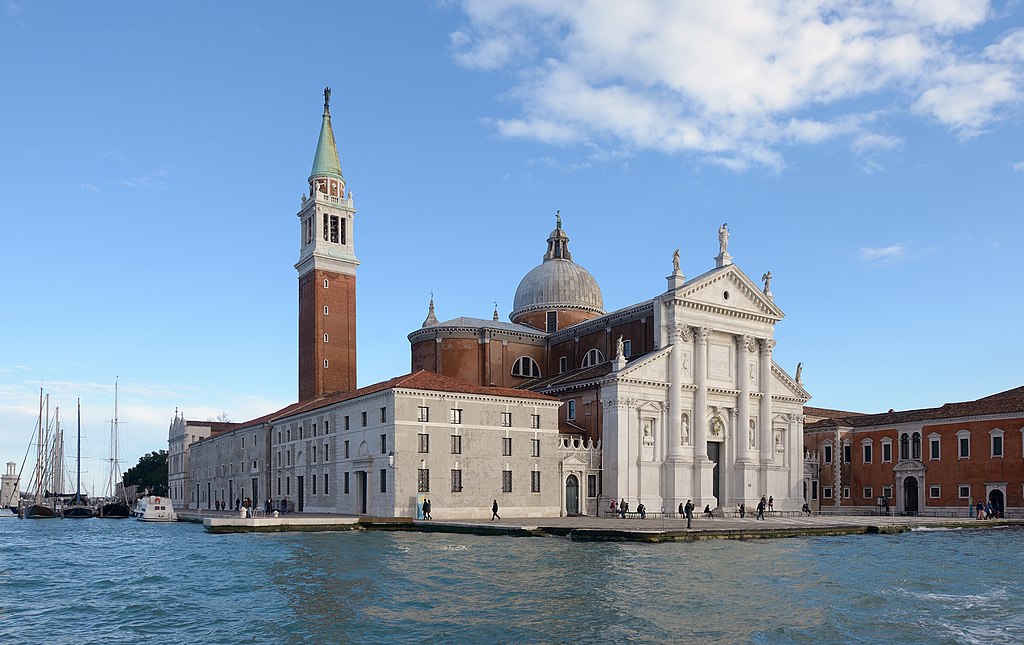
Venice is home to several of the world’s greatest examples of Renaissance Architecture. The main church within the San Giorgio Monastery is one of the largest within Venice, and it was designed by renowned Renaissance Architect Andrea Palladio. The white marble facade resembles a Roman Temple, with triangular pediments and decorative statues. Although the original monetary is far older, the Renaissance portions of the complex were built throughout the 16th century. Today, the San Giorgio Monastery is easily accessible through Venice’s public transportation system which carries locals and tourists by boat to different parts of the city.
11. Frederiksborg Castle – Hillerød, Capital Region, Denmark

Although it took longer for the Renaissance to make its way to Scandinavia, there are still plenty of great examples of Renaissance Architecture located throughout the region. Perhaps the finest Renaissance Building in all of Northern Europe, Frederiksborg Castle was built in the early 1600s. It was commissioned by one of Denmark’s most powerful rulers, King Christian IV. It served as his Royal Residence, and the size and grandeur of the building show just how powerful the Kingdom of Denmark was at this point in history.
12. Ospedale degli Innocenti – Florence, Tuscany, Italy
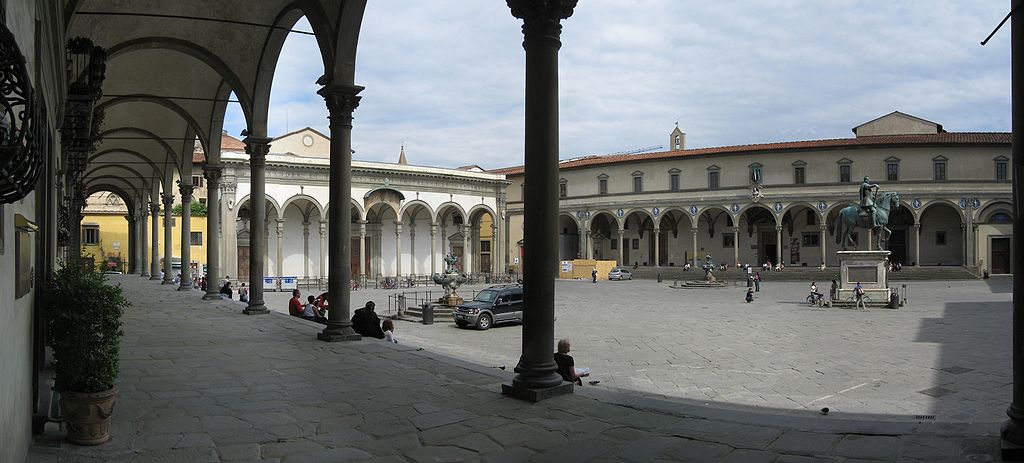
The original loggia at the Ospedale degli Innocenti was designed Filippo Brunelleschi in 1419. It’s one of the best examples of Renaissance Architecture from the time period. The design was so popular with the people of Florence, that several architects imitated it in later buildings. The Ospedale degli Innocenti, the Basilica della Santissima Annunziata, and the Loggia dei Servi di Maria were all built at different times but follow the same Renaissance principles from Brunelleschi’s original composition.
13. Castello Sforzesco – Milan, Lombary, Italy

Milan can sometimes feel like a modern metropolis full of contemporary architecture, but there are several places within the city where you can see historic buildings from Milan’s Medieval Past. Along with the Gothic-style Duomo di Milano, the Castello Sforzesco is an old building nestled within the busy streets of Milan. The castle served as the city’s main fortification during the 16th and 17th centuries and also served as the residence of the Dukes of Milan. The castle was damaged in several different conflicts, including WWII where much of the building was destroyed. But thankfully, after a major restoration project, the Castello Sforzesco looks just as it did before the war.
14. Basilica of Santa Maria Novella – Florence, Tuscany, Italy
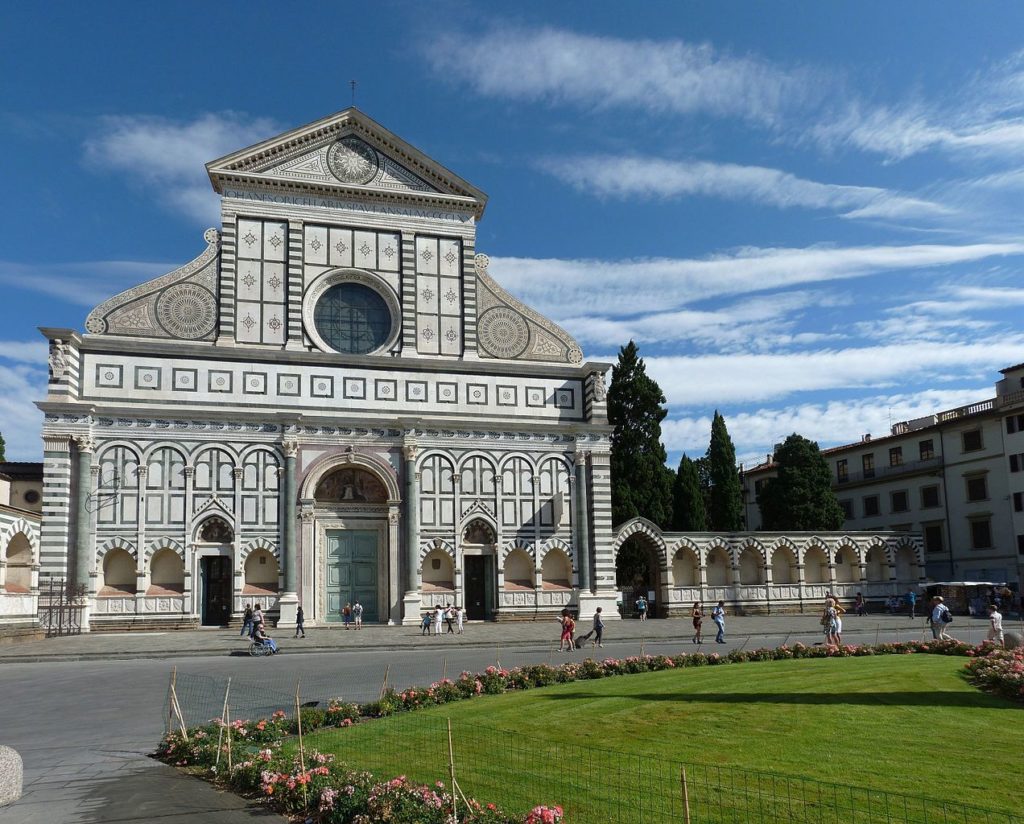
The Basilica of Santa Maria Novella features a Renaissance facade that was designed by Leon Battista Alberti. Alberti’s facade was completed in 1470, and it was just a marble veneer added to the front of a pre-existing church. The green and white marble were each imported from different parts of Italy. These two shades of marble can be found throughout Florentine Renaissance Architecture. The church is famous for the incredible works of art located inside, including pieces by one of Florence’s greatest Early Renaissance painters, Giotto di Bondone.

Interested in Renaissance Architecture? Check out our article on the Architecture of Florence to learn more about the birth of the Renaissance Movement.
15. Teatro Olimpico – Vicenza, Veneto, Italy

Although the Renaissance produced many incredible paintings and sculptures, theater was another form of art that really took off during the Renaissance movement. Although they had been around for centuries, plays took on a whole new life at this point in history. Set and costume design played a more pivotal role in productions, and attending plays became a typical activity for members of high society. Designed by the renowned Renaissance architect Andrea Palladio, the Teatro Olympico is a Renaissance-era Theater located in the city of Vicenza. Along with other theaters in Parma and Sabbioneta, the Teatro Olympico is one of only three surviving theaters from the days of the Renaissance.
16. Villa la Rotonda – Vicenza, Veneto, Italy
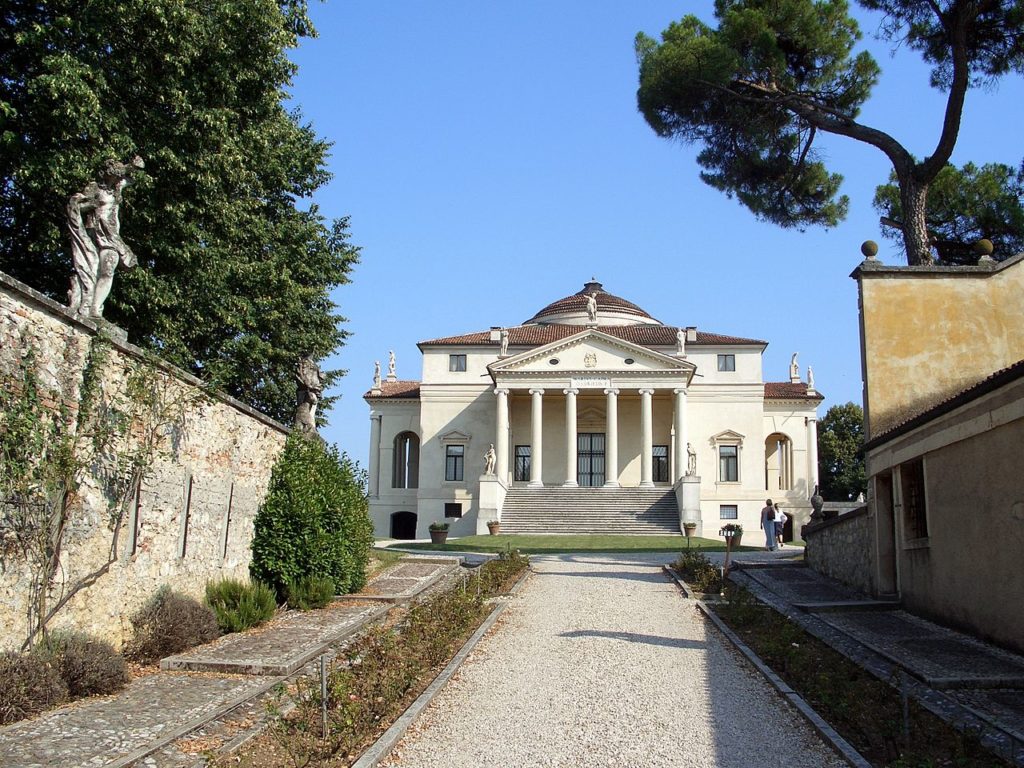
Another incredible building designed by Andrea Palladio is Villa La Rotonda. Also known as Villa Capra, it was built starting in 1567, but construction lasted several decades and wasn’t complete until after the death of Palladio. Many regard the Villa Rotonda as the greatest example of Palladian-style design. Palladio was obsessed with symmetry and proportions. The Villa Rotonda is symmetrical across every axis, both in the floorplan and in exterior elevation. Each room is also designed to be harmoniously proportioned and the Golden Ratio is used throughout the building.
17. St. Michael’s Church – Munich, Bavaria, Germany

The largest Renaissance church north of the Alps is St. Michael’s Church, located in Munich Germany. It was built during the 16th century and the front elevation was made to mimic other churches that were built previously in Italy. Throughout the interior and exterior, the church contains textbook elements of Renaissance Architecture. The round arches, Corinthian Columns, pediments, and overall symmetrical design all combine to create one of Germany’s most impressive Renaissance Buildings.
18. Augsburg Town Hall – Augsburg, Bavaria, Germany

Renaissance Architecture can be found throughout the German region of Bavaria. The Town Hall of Augsburg is a great example of this. It was constructed starting in 1615 and work lasted nearly a decade. The front facade of the building faces the Rathausplatz, and it’s designed with all of the typical features of the Renaissance style. There is symmetry, rhythm, and classical elements that match many earlier buildings from Italy. However, you can also see a distinct German flare in the design, like the onion domes atop the two towers, and of course the Eagle of the Holy Roman Empire, which is located at the top the main facade.
19. Michelangelo’s New Sacristy – Florence, Tuscany, Italy

The Sagrestia Nuova or New Sacristy is a renaissance-style chamber that was added to the Basilica di San Lorenzo. Michelangelo designed the space, and not only is it one of his greatest works of architecture, it also contains four of his most noteworthy sculptures. The four sculptures decorate the lids of Medici Tombs. Each of the four shows a different person representing night, day, dawn, and dusk. The image above shows the incredible coffered ceiling decorating the pendentive dome. The interior of the dome is meant to look just like that of the Pantheon in Rome. To get a complete view of the space and see all of Michelangelo’s sculptures, check out this Photo Sphere.
20. Antwerp City Hall – Antwerp, Flemish Region, Belgium

Antwerp City Hall is a great example of the reach of the Renaissance Style. Renaissance Architecture was used in churches throughout Europe, but also in secular buildings throughout the continent. The City Hall in Antwerp Belgium was built by the local government to house city operations and the town council. Construction began on the building in the 1560s, making it one of the earliest examples of the Renaissance style this far north. At the time it was constructed, Antwerp was part of the Duchy of Brabant which had been absorbed into the Hapsburg Netherlands in 1482.
21. Palazzo Medici – Florence, Tuscany, Italy

Palazzo Medici is a very famous Renaissance palace that was built by the Medici Family in Florence. Construction began in the mid-15th century, at a time when the Medici ruled as Florence’s leading family. Although they are subtle, you can still see some elements of Classical Architecture within the Palace’s Exterior Facade. There are small pediments above the first-floor windows and along the roofline, there is a decorative Classical-style cornice. The exterior of the palace shows the three different floors of the building, and the first floor is built with thicker more imposing stone walls. The three-tiered design of this palace has been duplicated throughout Italy and the rest of the world.
22. Palaces of Prague Castle – Prague, Bohemia, Czech Republic
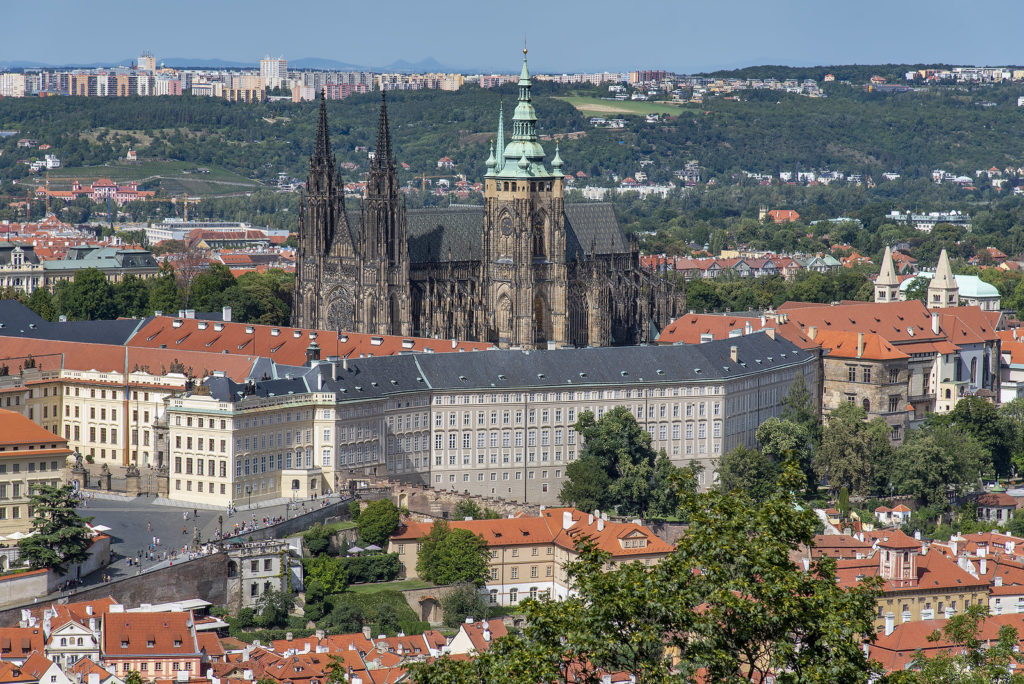
Prague Castle has a foundation dating back to the 9th century. Within the castle complex, you can find buildings from several different ages of architecture, including the Romanesque St. George’s Basilica and the Gothic St. Vitus Cathedral. Prague Castle also contains several massive palaces dating to the Renaissance and Baroque Ages. The Habsburgs ruled Prague for nearly three centuries, starting in the early 1500s, and they were responsible for most of the Renaissance additions. Rudolf II financed a massive project that created the incredible Spanish Hall, which was a lavish Renaissance-style Banquet Hall.

Interested in Prague? Read our article on the Architecture of Prague to learn more!
23. Villa Farnese – Caprarola, Lazio, Italy

The Farnese Family was a powerful entity living in Italy. They were based in and around Rome and they owned several extravagant properties. Villa Farnese is located in Caprarola, about an hour outside of Rome. It was built in the Late Renaissance, with construction beginning in 1559. The villa is unique because it was built in a pentagonal plan, with a large circular courtyard in the center of the building. This design, paired with the scale of the villa, was meant to impress the Farnese Family’s guests. They specifically wanted to show off their wealth and power when they constructed it. Villa Farnese remained one of the most important properties owned by the family until it eventually passed on to the Government of Italy.
24. Burghley House – Peterborough, England, United Kingdom

The Renaissance took a long time to make its way from Italy across the English Channel. It started to take hold during the reign of Queen Elizabeth I, who ruled from 1558-1603. For this reason, Renaissance Architecture in the UK is often referred to as Elizabethan Architecture. Burghley House is a great example of an English manor house, and it was built by a wealthy family as their countryside residence. Burghley House differs from a lot of other Renaissance Architecture because it lacks classical details like pediments above the windows and column capitals from the Classical Orders. However, you can still see a lot of other Renaissance design characteristics like rhythm and repetition, as well as symmetry.
25. Schloss Johannisburg – Aschaffenburg, Bavaria, Germany

The Schloss Johannisburg is one of several Renaissance Buildings located in the German Region of Bavaria. Bavaria, being just north of the Alps from Italy, was one of the first areas where the Renaissance spread out from the Italian Peninsula. Construction began in 1605, and the design is distinctly German, but it still borrows many elements of Italian Renaissance Design. The rhythm and symmetry of the facades were key principles from the Renaissance – but the steeply pitched roof with window dormers and the pinnacles of the towers are distinctly Bavarian Elements.
Renaissance Additions to Older Buildings
The Renaissance was also a popular form of architecture for building renovations and modifications. There are hundreds of buildings across Europe that were built in the Romanesque and Gothic Ages, many of which were given Renaissance-era upgrades. Below you can see the Castel Nuovo in Naples Italy, which originally dates from the 1200s. After the Aragonese King Alfonso V took over the throne of Naples, he commissioned the Renaissance-style entrance to Castle Nuovo. Work began on the marble entrance in 1453, and the design was meant to mimic an Ancient Roman Triumphal Arch. This allusion to the architecture of the Ancient Romans was common throughout the Renaissance Movement.
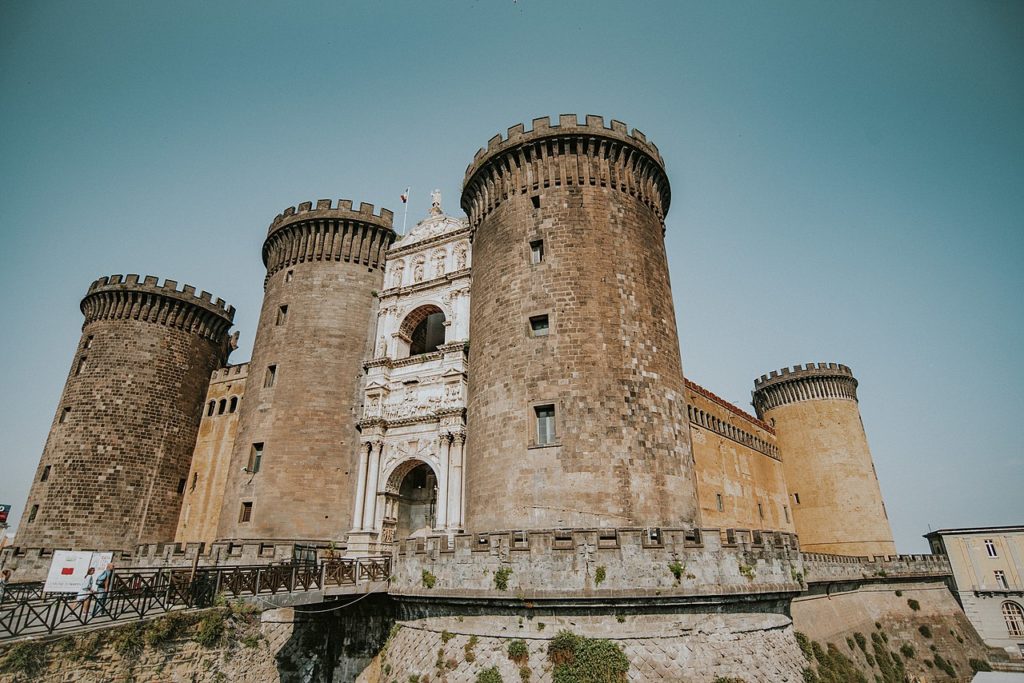
Another building that contains architecture from several different ages is the Louvre in Paris. The Lescot Wing of the Louvre was designed by Pierre Lescot and is often referred to as the Sully Wing. It is the oldest surviving portion of the palace, but the actual foundations of the building are much older. Over time, the Louvre has seen dozens of renovations and additions. The French Kings added several wings in the Baroque and Neoclassical styles. There is the modern renovation with the glass pyramid that was built by the architect I. M. Pei.

Renaissance Revival Architecture
(Neorenaissance Architecture)
In the 19th and early 20th centuries, Revival Architecture was a popular phenomenon throughout the entire world. Cities from Europe to the Americas, to India and Australia, were building Revival-Style buildings. Neoclassical, Neo-Gothic, Neo-Baroque, and Neo-Renaissance were all popular forms of Revival Architecture. Below is an image of the Prague National Theater, located in Prague, the capital of the Czech Republic. The Theater was built using all of the signature elements of the Renaissance Style. But it was completed in the year 1881, several centuries after the age of the Renaissance.

The Vladamir Palace in St. Peterburg Russia is another great example of Renaissance Revival Architecture. It is one of the many 19th-century palaces found throughout St. Petersburg that were built during the peak of the Russian Empire. Work began on the building in 1867, and it was inspired by older buildings in the Renaissance, such as the Medici Palace in Florence. The geometric stonework on the front elevation was repeated throughout the Renaissance and Revival eras.
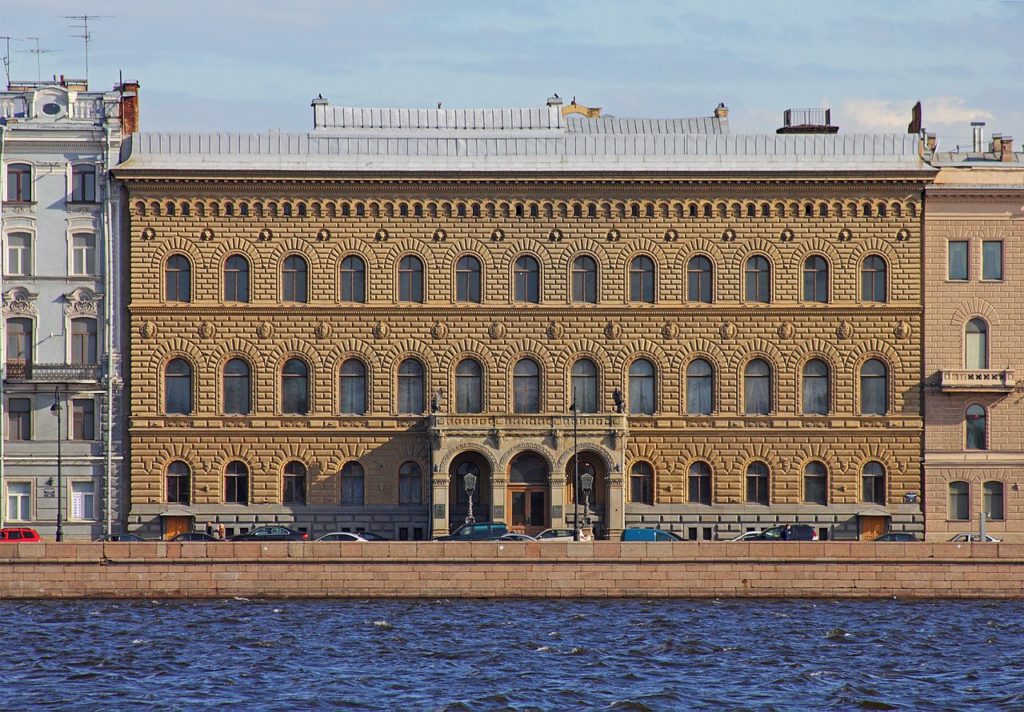
Renaissance Architecture in Review
The Renaissance will always be remembered as one of the most important movements in art and architecture. Artists like Michelangelo, Leonardo da Vinci, and Filippo Brunelleschi were all working tirelessly to create Renaissance Masterpieces. The paintings, sculptures, and buildings of the Renaissance are still influential to this day. Although the Renaissance eventually transitioned into the Baroque Art Movement, there was a distinct Renaissance Revival in the 19th century, which spread Renaissance Architecture throughout the world. Today, there are countless cities that contain Renaissance Buildings, and the world of architecture was never the same after the Age of the Renaissance.

- About the Author
- Rob Carney, the founder and lead writer for Architecture of Cities has been studying the history of architecture for over 15 years.
- He is an avid traveler and photographer, and he is passionate about buildings and building history.
- Rob has a B.S. and a Master’s degree in Architecture and has worked as an architect and engineer in the Boston area for 10 years.
Like Architecture of Cities? Sign up for our mailing list to get updates on our latest articles and other information related to Architectural History.
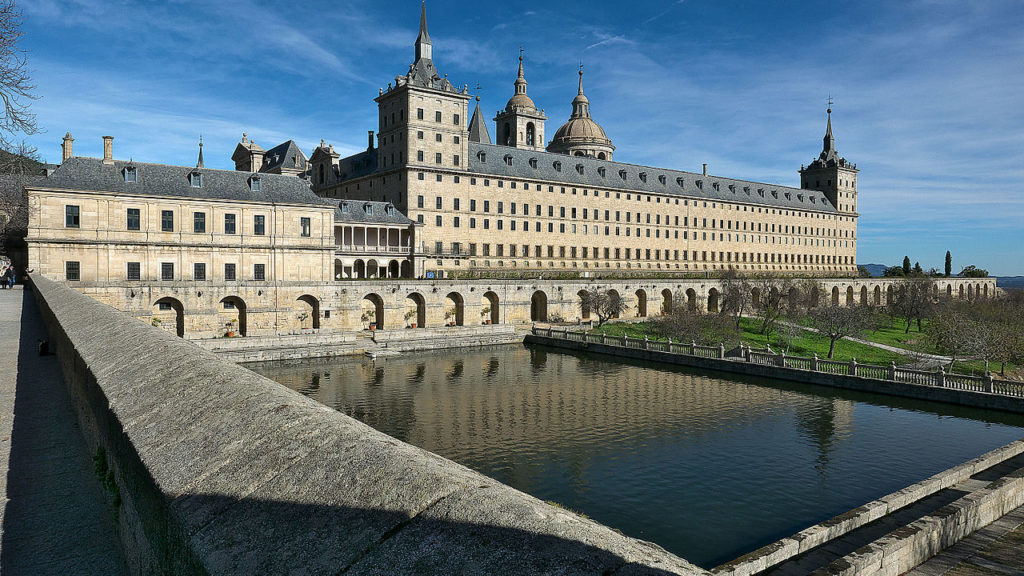
Photo by José Luis Filpo Cabana from Wikimedia Commons


